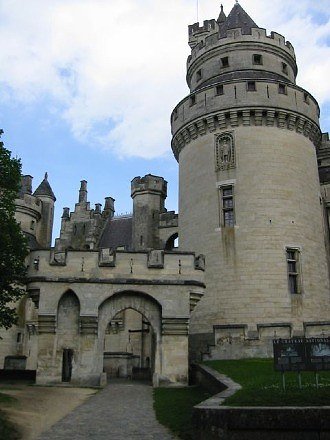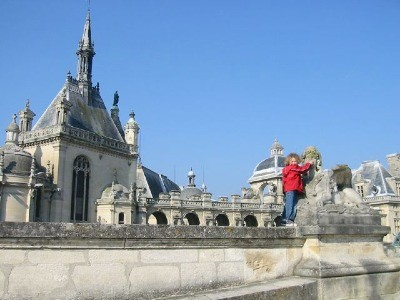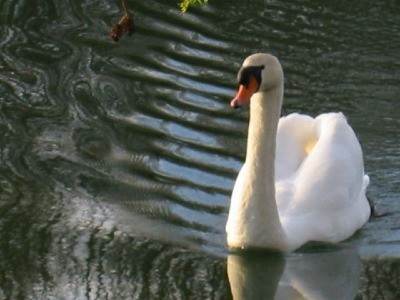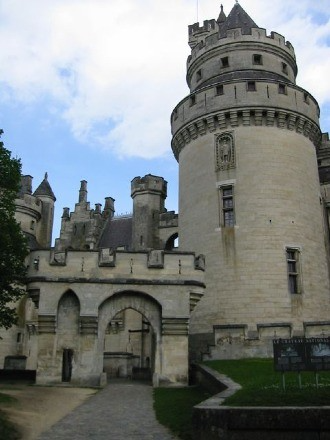The Châteaux of Paris

Thu 24 Jun 2010

The château at Chantilly, where the sphinx is greeted with a tweak.
Les châteaux de Paris? Sounds odd, because when we talk about the châteaux region of France, thoughts automatically travel to the Loire. But historically Paris was and still is the political, commercial and religious center of France. Everybody who was anybody needed to be near the capital, and the elite required glorious estates where they could impress others, assert their own importance, tend to their properties and escape the pressures of city living while staying close to home. The châteaux are all within an hour’s ride from the city by public transport, with large grounds attached, perfect for an afternoon picnic. This is great for visitors to Paris who want to make a day trip of triping the royal residences.
At the top of many people’s list is Versailles, which is easy to get to on the RER C. The buildings are stunning, the grounds spectacular. Of all the châteaux in France, Versailles is the most outrageous for its opulent decor and vibrant history: ornate silk brocades, gargantuan Baccarat chandeliers and gilt everything bring the past to life. Once there, you could spend days visiting the palace, gardens, Grand Trianon, and Marie-Antoinette’s estate; rowing in the Grand Canal; and sitting in the shade of the magnificent plane trees while enjoying lunch at one of the many on-site restaurants.

A regal swan at Fontainebleau.
If you’re yearning for romantic tales, you can take a pleasant train ride from the Gare de Lyon to Fontainebleau to visit the courtyard where Napoléon and Josephine bid their final adieux. The château boasts 700 years of royal history, with rich tapestries as well as the apartments of the royal mistress, Madame de Maintenon, and the young queen, Marie-Antoinette. The château is enchanting, with a quaint village an easy stroll away. You can stop in town for lunch or to create a gourmet picnic to be enjoyed in the château’s forest. Parisians head there to walk their dogs, go horseback riding or hike, and many Europeans travel the continent for the forest’s excellent rock-climbing opportunities.
A 22-minute ride from the Gare du Nord, the Château de Chantilly is another good option, with stables that are fit for a king, quite literally. You can attend equestrian shows, visit the stables and even spend a day at the races. The art collection is world renowned, particularly for its series of drawings by artists like Michelangelo, Rubens and Van Dyck; it also includes Rafael’s Three Graces. Chantilly is the French word for “whipped cream,” and the château’s kitchen is where the chef Vatel invented this gossamer dessert for none other than Louis XIV. You can taste some for yourself on the château’s grounds, at the gourmet Restaurant du Hameau.
The Château de St.-Germain-en-Laye houses a museum focusing on archaeology. The vista of Paris as you arrive on the grounds from the ultraconvenient RER A is simply stunning. Like the other châteaux, this one comes with a small forest to stroll through. It also has a very upscale little village that’s great if you feel like lunch or a quiet shopping experience that’s far from the quicker pace of Paris but just minutes away.

The medieval fortress at Pierrefonds.
There are many other fascinating châteaux to visit, like the privately owned Vaux le Vicomte, which inspired Louis XIV’s Versailles and the Gérard Depardieu film Vatel; or Pierrefonds, which still looks like a fortress from the warring days of the Middle Ages. But these châteaux are harder to reach by public transportation and would best be visited by car.
If you simply can’t get out of the city, you can console yourself with the knowledge that the first and foremost palace of France, still the largest and most visited in Europe today, is the Louvre. People go there for the art, but it is fascinating to visit the foundations (and model) of the medieval château, and see the collection of royal jewels and the sumptuous apartments of Napoléon III.